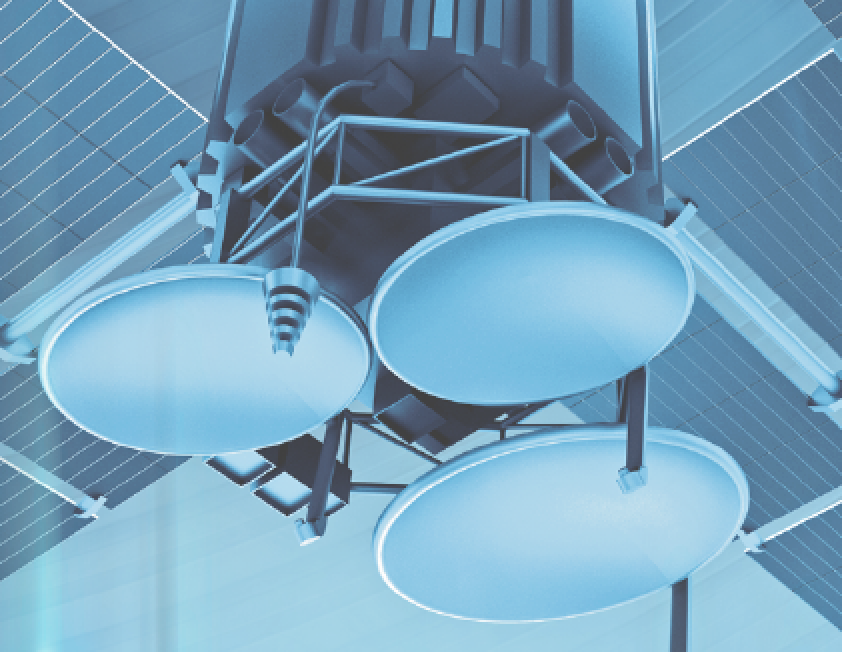A friend of mine once coined this wonderful phrase—“unique but not too different”—to define the goal of all sales and marketing.

Your products or services need to be unique—or at least demonstrably different—or nobody will purchase them. However; if they’re too different, nobody but wild-eyed Early Adopters will take the risk of engaging with your offerings.
For decades, this was not much of a problem in the satellite industry. The business was renowned for the stability of its financial performance and the evolutionary (did somebody say “snail’s?”) pace at which its technology changed. This very stability made the satellite industry so attractive to private equity: we offered a stable stream of earnings in a business whose performance did not correlate with the business cycle of most other industries.
Those days of “yore” are rapidly receding in the rear view mirror. At the close of December 2016, a few trends became crystal clear:
—The price per kilogram to get a payload to orbit is heading downward and likely to continue doing so for a while
—Transponder pricing per megahertz or megabit is going the same way
—Despite capacity gluts in some markets, there will be a lot more satellites and much more bandwidth in GEO, MEO and LEO over the next few years
—It’s a brave new world and every business in the industry is adapting at a furious pace, driving a wave of innovation, fear and excitement not seen for years
From Scarcity to Abundance
From their first days, satellite services have been ruled by scarcity. There were never enough orbital slots, launch inventory or bandwidth at the correct price to give customers everything they wanted.
As any real estate mogul will tell you, scarcity is great if you are the seller but not so great if you happen to be the buyer. The stately financials and measured innovation of the business was the rational response to managing scarcity, and the operators of successful satellites were rewarded by reliably high margins for the risks they took.
After so many years running businesses driven by scarcity, however, we may be facing a future of abundance. If so, it will be brought to us by cheaper launches, immense increases in processing power and a broad range of satellite configurations from smallsats in LEO to massive spacecraft in GEO.
That’s just the start. Next year, a new generation of flat panel antennas will go commercial. If they succeed, they may eventually transform the economics of data networks by drastically reducing terminal cost and complexity.
Meanwhile, the software-defined satellite—of which the Eutelsat/ESA Quantum is the first example—will reduce one of industry’s biggest risks and hurdles to innovation: that of designing and flying satellites that nobody wants.
If It’s Space, It Can’t Be Old
I’m not very fond of the term “new space” because the alternative is so grey and creaky. In a business that is always doing new things, how about if we refer to the companies already established in it as “incumbents” and the folks in the pre-commercial or early commercial stages as “emerging?”

Therefore, Intelsat is an incumbent and OneWeb is emerging. Arianespace is an incumbent and I think SpaceX deserves to be considered “emerged,” having accomplished one of the toughest jobs in its market: keeping their customers after blowing up one or two rockets with expensive payloads resident on them.
I raise this because emerging companies and incumbents generally have different attitudes to the exploitation of near-Earth space. This was made abundantly clear to me by the CEO of an incumbent who made enjoyably impolitic comments at the Global SatShow in Istanbul
in November.
He said something like this: “All these new companies think that it’s a wide-open market. You have companies doing business whose idea of launching satellites is to crank down a window on the International Space Station and toss cubesats out. They think they can build a 400 or 600 or 2,000-satellite constellation and operate it without interfering with anybody else. It’s ridiculous! For us, Earth orbit is crowded. It is full of radio frequency interference that we take enormous trouble to coordinate. It’s not virgin territory.”
I tell this story not to suggest who is correct and who is wrong. I tell it to suggest that incumbents and emerging companies have an enormous amount to learn from one another.
Video Didn’t Kill the Radio Star
If you take public comment at face value, the leaders of emerging companies can sound a lot like the leaders of dot-com and fiber network companies before the infamous crash of 2001. Flush with cash from a speculative investment bubble, they declared they were going to transform commerce and make obsolete every brick-and-mortar business.
It turned out not to be the case—not only because hubris eventually caught up with investors, but because those brick-and-mortar businesses did not stand still. They adopted the Jedi mind tricks of the dotcomers and used the new technologies to make their existing businesses run better, faster and cheaper. There was, and continues to be, plenty of disruption, but video failed to kill the radio star, contrary to that 1979 hit song by the Buggles.
The real relationships between incumbent and emerging companies is represented by the decision of ViaSat, an incumbent hardware maker, to bet the company on building and launching ViaSat-1—and then to start designing three enormous GEO spacecraft to raise the ante. It is represented by Intelsat’s EpicNG architecture and the $25 million it invested in OneWeb. It is the Hughes bet on Jupiter and the SES acquisition of O3B Networks.
These are big, established companies investing in services that have the potential to displace their own. That is what big, smart tech companies—think Apple, Google, Facebook and Microsoft—do to maintain their dominance as the technology fundamentals shift beneath them.
It happens in small ways as well as big. This year I interviewed the founder and CEO of a cubesat company. To my surprise, he said that one of his best lines of business at that moment was supplying space-qualified components to incumbent satellite manufacturers. Why? Because his cubesats were getting into orbit much faster than conventional satellites, which meant that the components were on more missions. (Hey, they’re just cranking down the window and tossing them out, right?) Those extra trips to orbit produced value that he could turn into sales.
What’s Next?
I don’t know what will happen during this year, let alone the three, five or ten years it will take to sort out the emerging and incumbent companies in the market.
Harvard professor Clayton Christiansen wrote a famous book, The Innovator’s Dilemma, that may offer a clue. In it, he charted how tech innovation works. Companies seldom succeed by bringing new technology to existing markets. Instead, they bring a cheaper but more powerful technology to a new customer segment.
If the incumbents are prospering by selling big disk drives to mainframe and minicomputer markets, the emerging company introduces a smaller, faster, cheaper drive for personal computers, where the big drives are unaffordable.
The bad news for the incumbents is that, once established, those smaller, faster, cheaper drives tend to invade the established markets from below. That’s where the disruption occurs, as the incumbents lose their existing markets and are unable to compete in new ones.
Can it happen here, in this industry that got its start in 1957 with the launch of Sputnik? Sure. Consider high-throughput satellites. They started life as the solution to delivering Internet to homes and small offices at a competitive price. Now they are rapidly finding adoption for military applications, oil & gas, retail and other markets.
In Australia, incumbent satellite operators are reported to be up in arms because the satellite launched by the government for the NBN digital inclusion project is also being used by mining companies as a cheap substitute for traditional and much more expensive VSAT.
What’s next? Will emerging space and satellite companies disrupt incumbents from below? The Big Four tech companies have figured out how to make disruption work for them by investing in it.
Do the Intelsat investment, the Eutelsat/ESA Quantum satellite and the SES acquisition signal that incumbents in this business can do the same, at the same time as emerging companies keep rolling out those ambitious plans to launch hundreds or thousands of satellites?

Well, welcome to interesting times.
Robert Bell is executive director of the Society of Satellite Professionals International, the industry’s largest membership association, which is dedicated to making the industry one of the world’s best at attracting and managing the talent that powers innovation. He can be reached at rbell@sspi.org.



